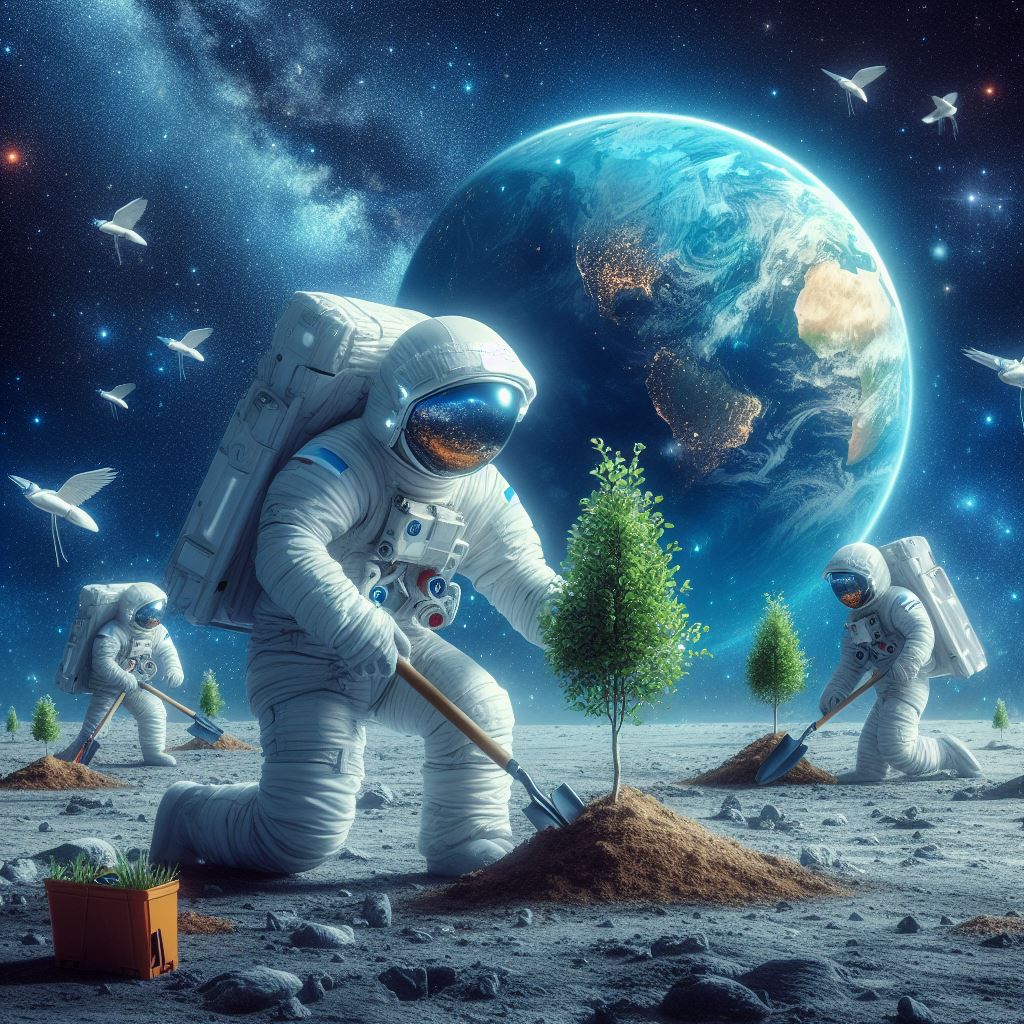Aerospace
NASA’s Ambitious Plan to plant trees in moon

In a groundbreaking move, NASA is gearing up to embark on a mission unlike any before: planting trees on the moon. This ambitious endeavor marks a significant leap forward in lunar exploration and sustainability efforts.
With the aim of expanding understanding of extraterrestrial environments and potentially laying the groundwork for future colonization, this initiative captures the imagination and pushes the boundaries of space exploration.
The project, aptly named Lunar Effects on Agricultural Flora (LEAF), is slated for a September 2026 lunar landing. It represents NASA’s inaugural endeavor to grow vegetation in the harsh conditions of space, holding the promise of revolutionizing the way we envision sustaining future space missions.
At the heart of this endeavor lies a miniaturized lunar greenhouse, a testament to human ingenuity and technological advancement. The LEAF project aims to explore the feasibility of cultivating crops in space, a crucial step towards establishing sustainable habitats beyond Earth.
But why duckweed, cress, and brassica, you may wonder? These selected plants represent more than just foliage; they symbolize resilience and adaptability in the face of challenging environments. Through rigorous experimentation, scientists aim to unlock the secrets of plant growth in microgravity, paving the way for self-sustaining extraterrestrial ecosystems.
Space Lab Technologies leads the charge on this ambitious project, joined by esteemed partners such as the University of Adelaide, La Trobe University, and the United States Department of Agriculture, among others. Together, they form the Plants for Space (P4S) consortium, pooling expertise and resources to tackle the complexities of space agriculture.
“Importantly too, the technologies and practices developed as part of Plants for Space will improve life on Earth and benefit all Australians by addressing challenges like food security and water scarcity,” highlights a spokesperson for the project. Indeed, the implications of this research extend far beyond the confines of our celestial neighbor, offering solutions to pressing issues facing humanity on Earth.

